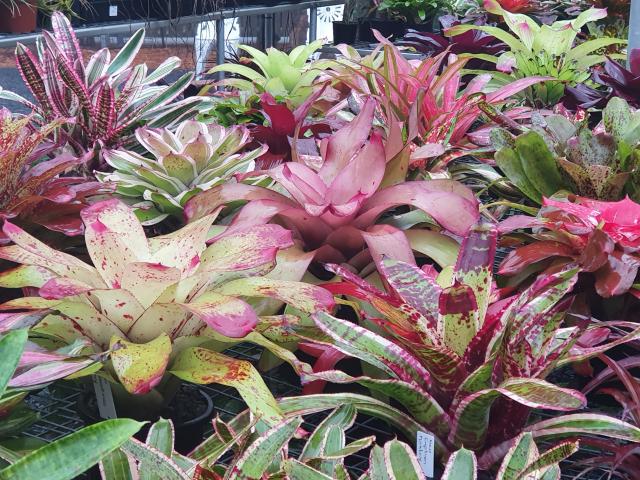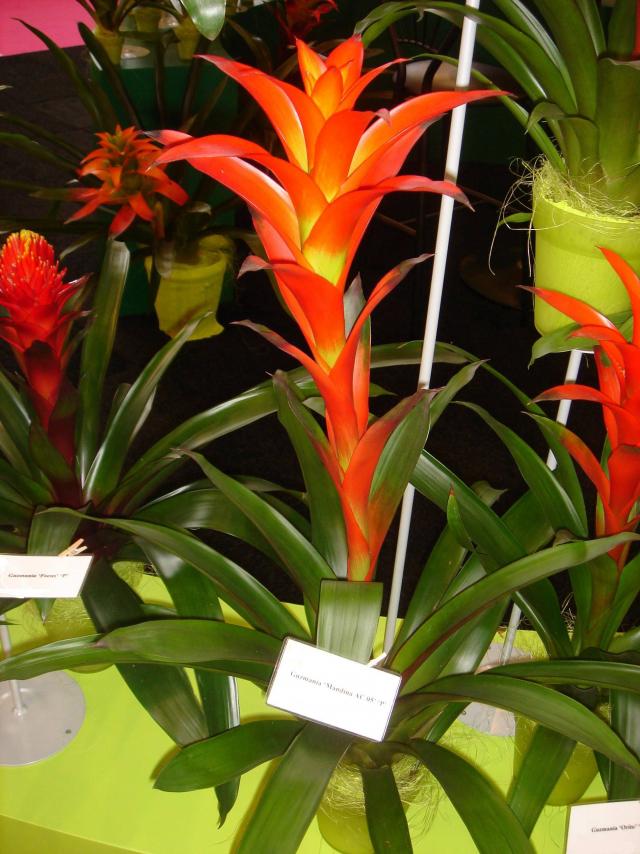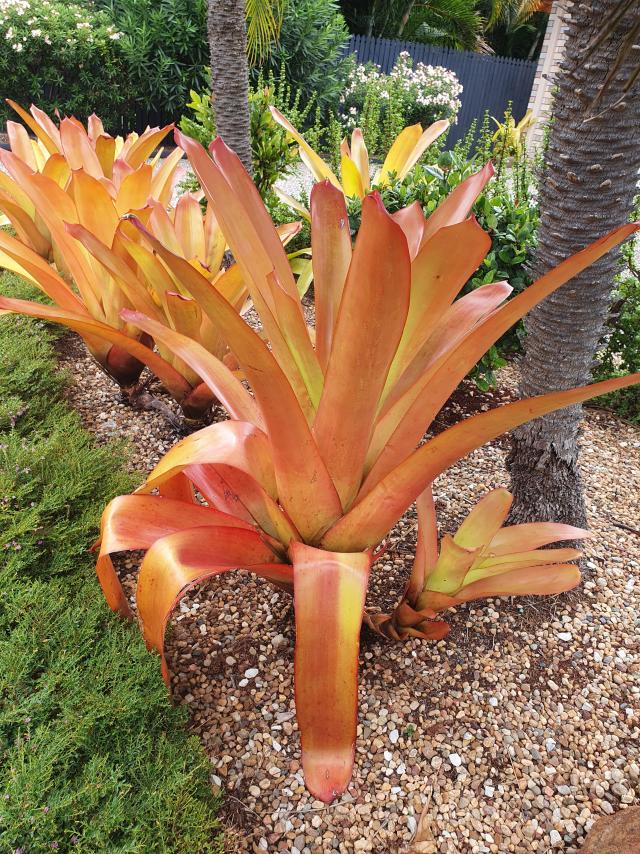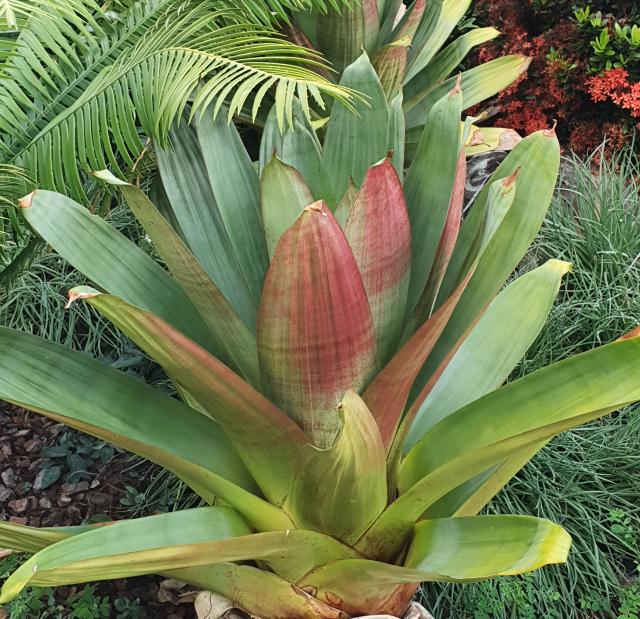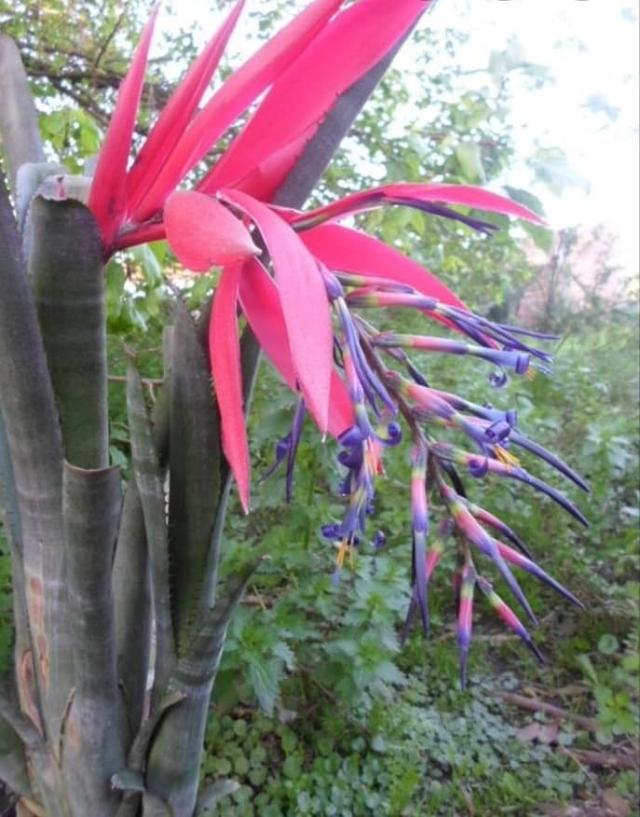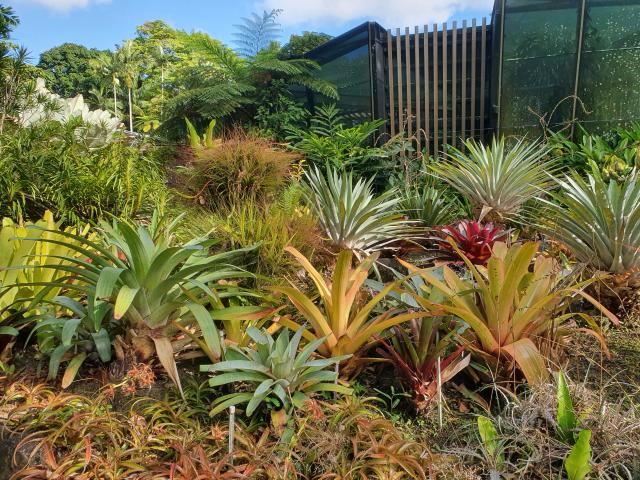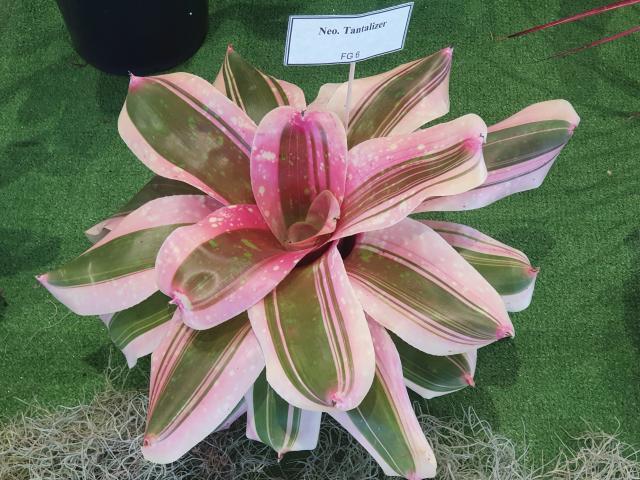This last week I spent time in Brisbane and was amazed by the stunning Landscapes using Bromeliads especially in many high profile inner city landscapes.
And even the Brisbane City Council are utilising Bromeliads is some of their high profile landscapes in the CBD.
Bromeliads will produce coloured leaves around flowering time which attracts the insects or birds required for pollination.
Bromeliads will flower only once in its lifetime and then produce off shoots, usually from the base and finally die.
The cup of the bromeliad should be kept full of clean water and the cup flushed out completely once every month.
Bromeliads need good light to maintain their beautiful colours.
There are several varieties that will survive in all-day sun but most need protection from midday sun.
Bromeliads are hardy plants native to South America that enjoy the humidity of the tropics.
There are thousands of different bromeliad species and over 15000 different bromeliad hybrids that come in an array of shapes and sizes and work in many light conditions, so you’re bound to find a variety that can work for you.
Underneath old trees or palms that throw shade, there is usually a dense mat of roots that can make it hard to establish other plants.
Bromeliads grow very well in these conditions as they don’t feed from their roots.
Bromeliads basically feed from the water debris that falls into their central cup.
Most Bromeliads grow well on tree trunks and in tree branches.
Lava rock or scoria is recommended as a potting medium.
If you plant Bromeliads directly into your garden it is best to build up the soil with rocks, gravel or scoria to ensure good drainage.
Bromeliads are particularly good for shade areas that are fairly dry from root competition.
Most Bromeliads use their roots for stability and feed through trichomes on their leaves.
Their main requirement is to drain well but they can survive being too wet.
Bromeliads mainly need phosphorous and potassium and have a low requirement for added nitrogen as it will only make the leaves long and green.
An orchid flowering fertiliser or a bloom booster is the closest to the plants required NPK ratio.
Remember to flush out the water regularly that sits in the central cup, otherwise mosquitoes can breed in these Bromeliads.
Next weekend at the Rockhampton Show Ground’s Robert Schwarten Pavilion the Rockhampton Bromeliad Group are conducting their annual Bromeliad and Tillandsia Sale.
Starting Saturday from 8am to 2pm and Sunday from 9am to 12pm.
For a gold coin entry you can come and gain advice and information about these unique plants from the Bromeliad and Tillandsia sellers and guest speakers.
So maybe it is time to investigate the benefits of Bromeliads for your garden and consider some of these hardy Bromeliad species:
Aechmea is available in many shapes, varieties and colours, both in leaves and flowers.
The flower rises up from the centre on a long flower stork with colourful bracts. After flowering, berry-like fruits form which last up to several months.
Alcantarea has become a very popular landscape plant, this due to the size of this Bromeliad.
Some Alcantarea can reach sizes of 1.5m across with flower spikes 2.5m high.
A native to high cool environment along rocky cliffs in Brazil but if acclimatised Alcantarea can tolerate a warm sunny positions.
Billbergia are usually tall and tubular, the foliage can be mottled, cross banded or variegated.
The inflorescence rises from the centre then cascades down the plant as the flowers open, they are short lived but the colours are exquisite.
Do not fertilise billbergia or they will lose their colour until the next generation.
Guzmania are soft-leafed, with exquisite inflorescence, the complete flower head of the Guzmania including stems, stalks, bracts, and flowers, rising from the centre in yellow, orange or red with white or red flower petals.
They need to be kept under shade.
Neoregelia or Neos have been come very popular with gardeners for their showy foliage with bright colours and interesting patterns, and they are among the most widely hybridized types of bromeliads.
Small flowers appear inconspicuously inside of the leaf cup when the plants bloom.
These bromeliads are sometimes called “painted fingernail” for the pink markings on their leaves.
Tillandsias or Air Plants can appear quite alien and can vary in size and shape.
Most are saucer-sized but some can grow up to three metres.
Normally a grey-green plant Tillandsias may change colour when coming into flower.
Tillandsias need regular watering and good air movement to survive.
Tillandsias are mainly tree dwellers and can be attached to almost anything.
I think most gardeners would be surprised by beauty of some of these plants.

